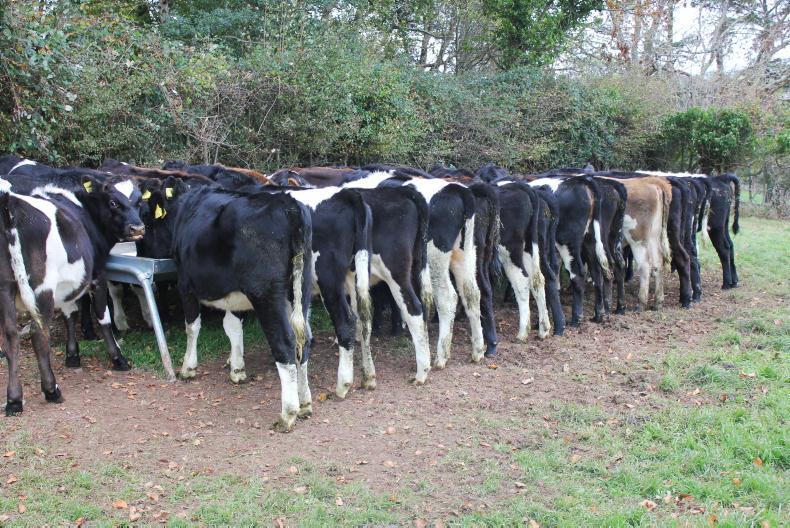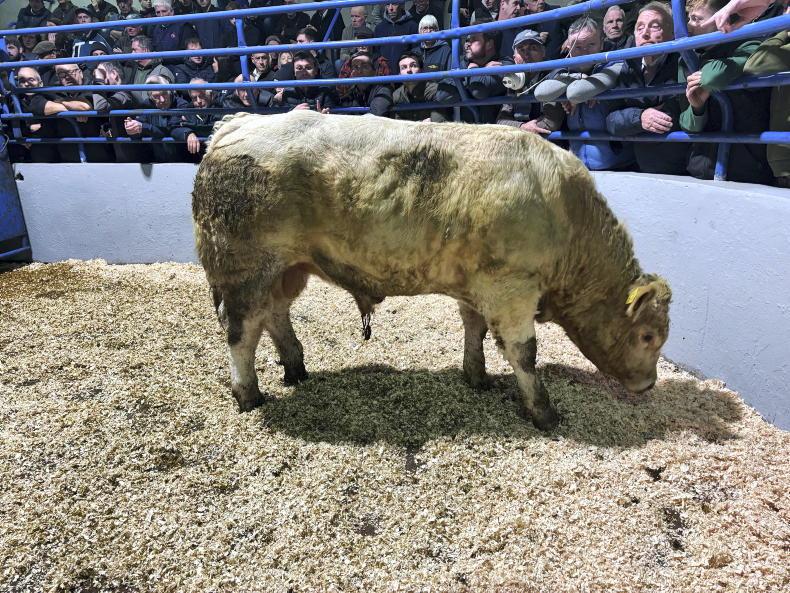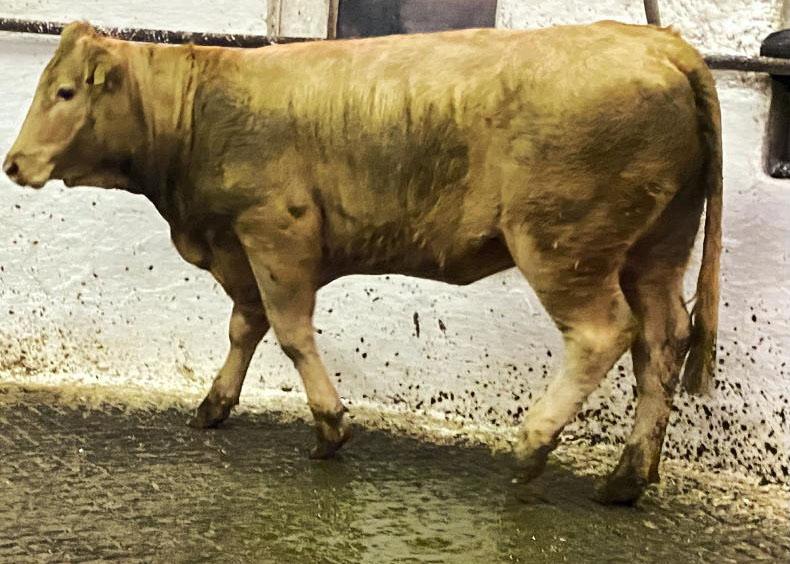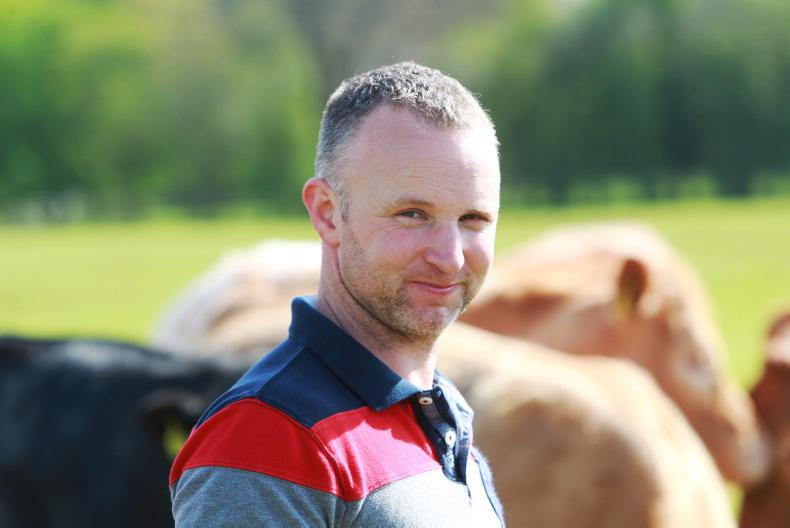Despite repeatedly going on and on about the quiet temperament of my dairy heifers, I am perfectly happy to reiterate my thoughts on that subject.
If this is becoming a bit monotonous, then hard luck because I think the importance of animal temperament has never been more critical.
Labour units on farms have been dropping for decades. Allied to that is the age structure of the farming industry, that does not fit hand in glove with the handling of beef cattle.
I mentioned a few months ago about the beef bullocks straying onto a neighbour’s farm, and the resulting stress of trying to get them back. Once they had returned to their intended fields they settled quickly, and even the jumpier steers showed little signs of sustained nervousness.
This coincided with the introduction of meal feeding (due to the drought) which, of course, has a calming effect. By the time grass had taken off and was in plentiful supply, it was hardly worth removing the meal bag, so I kept pouring the money into them, and they responded in kind by piling on the beef.
I reluctantly sold a few in late July and really struggled to pick out four cattle that were properly finished. The remaining nine (which were under-finished at this time) went away in late September and averaged 411kg carcase weight. Apart from one heavily muscled animal that was never going to be fat (U+1; 447kgs), they fell into fat classes three and four. But that’s only half the story.
The real issue involved the loading of the last nine, because (of course) the lightest bullock among them was also the most nervous.
He wasn’t a truly wild animal, but was one of those steers that you’d love to kill early in the grazing season. In his defence, he behaved impeccably when standing in a crush with four or five mates.
It was more about his behaviour when he saw a stranger (ie everyone else on the planet except me), especially if this coincided with being near an enclosed space. Therefore, when I arranged for a lorry to come and collect them, I knew preparations would have to be made with military precision.
Loading
For five days prior to loading, I brought them into a shed and fed them. I even practiced closing the door behind them, although for a couple of mornings this triggered his Usain Bolt-like reactions and he thundered out past me, doing that funny sideways run where he was nearly galloping but at the same time turning to stare at me.
When the lorry arrived, I had every imaginable entrance blocked with gates, pallets and sheep hurdles. Everything seemed calm until the lorry driver walked into the shed with me to funnel them out and into a narrow passage.
With the nervous bullock in the lead, nine cattle (averaging 740kg) barrelled their way down this walkway and onto the lorry.
With us in hot pursuit, we landed at the bottom of the tail door and were about to swing one gate behind them when we met Mr Berserk exiting the lorry at about 30m/hr. Amazingly, he ran back up the passage, did a few laps of the shed, then re-joined his friends on the lorry without us doing very much except standing with our mouths hanging open.
Dairy calves
Compare this with events a few weeks later, when one of the dairy calves appeared a bit off colour.
I had just shifted them to a field that was completely inaccessible to handling facilities, and one of the heifers seemed to be a bit dull, with a suspected temperature. We walked her onto a lane and let another calf out to keep her company.
We then drove the two of them a considerable distance to the yard, where we easily negotiated them up into a shed and treated the sick animal. Even injecting these little creatures is a simple process, and afterwards they wander out of the crush as if they can hardly be bothered with all the fuss.
Result
No matter how I compare the beef cattle with the dairy heifers, the result comes out in favour of the contract rearing. Financially I am better off, they are easier to handle, and unless beef-bred animals are suddenly going to become docile, then common sense will surely dictate that I continue to rear these heifers.
And after some very stressful moments this summer and autumn, I wouldn’t be hard to convince that suckler-bred cattle have a limited future on farms like this one.
Read more
Farmer Writes: break-out in the summer drought
Farmer Writes: TB disrupts heifer-rearing plans
Watch: lungworm dose that went badly wrong
Fifty-yard dash with a suckler cow
Despite repeatedly going on and on about the quiet temperament of my dairy heifers, I am perfectly happy to reiterate my thoughts on that subject.
If this is becoming a bit monotonous, then hard luck because I think the importance of animal temperament has never been more critical.
Labour units on farms have been dropping for decades. Allied to that is the age structure of the farming industry, that does not fit hand in glove with the handling of beef cattle.
I mentioned a few months ago about the beef bullocks straying onto a neighbour’s farm, and the resulting stress of trying to get them back. Once they had returned to their intended fields they settled quickly, and even the jumpier steers showed little signs of sustained nervousness.
This coincided with the introduction of meal feeding (due to the drought) which, of course, has a calming effect. By the time grass had taken off and was in plentiful supply, it was hardly worth removing the meal bag, so I kept pouring the money into them, and they responded in kind by piling on the beef.
I reluctantly sold a few in late July and really struggled to pick out four cattle that were properly finished. The remaining nine (which were under-finished at this time) went away in late September and averaged 411kg carcase weight. Apart from one heavily muscled animal that was never going to be fat (U+1; 447kgs), they fell into fat classes three and four. But that’s only half the story.
The real issue involved the loading of the last nine, because (of course) the lightest bullock among them was also the most nervous.
He wasn’t a truly wild animal, but was one of those steers that you’d love to kill early in the grazing season. In his defence, he behaved impeccably when standing in a crush with four or five mates.
It was more about his behaviour when he saw a stranger (ie everyone else on the planet except me), especially if this coincided with being near an enclosed space. Therefore, when I arranged for a lorry to come and collect them, I knew preparations would have to be made with military precision.
Loading
For five days prior to loading, I brought them into a shed and fed them. I even practiced closing the door behind them, although for a couple of mornings this triggered his Usain Bolt-like reactions and he thundered out past me, doing that funny sideways run where he was nearly galloping but at the same time turning to stare at me.
When the lorry arrived, I had every imaginable entrance blocked with gates, pallets and sheep hurdles. Everything seemed calm until the lorry driver walked into the shed with me to funnel them out and into a narrow passage.
With the nervous bullock in the lead, nine cattle (averaging 740kg) barrelled their way down this walkway and onto the lorry.
With us in hot pursuit, we landed at the bottom of the tail door and were about to swing one gate behind them when we met Mr Berserk exiting the lorry at about 30m/hr. Amazingly, he ran back up the passage, did a few laps of the shed, then re-joined his friends on the lorry without us doing very much except standing with our mouths hanging open.
Dairy calves
Compare this with events a few weeks later, when one of the dairy calves appeared a bit off colour.
I had just shifted them to a field that was completely inaccessible to handling facilities, and one of the heifers seemed to be a bit dull, with a suspected temperature. We walked her onto a lane and let another calf out to keep her company.
We then drove the two of them a considerable distance to the yard, where we easily negotiated them up into a shed and treated the sick animal. Even injecting these little creatures is a simple process, and afterwards they wander out of the crush as if they can hardly be bothered with all the fuss.
Result
No matter how I compare the beef cattle with the dairy heifers, the result comes out in favour of the contract rearing. Financially I am better off, they are easier to handle, and unless beef-bred animals are suddenly going to become docile, then common sense will surely dictate that I continue to rear these heifers.
And after some very stressful moments this summer and autumn, I wouldn’t be hard to convince that suckler-bred cattle have a limited future on farms like this one.
Read more
Farmer Writes: break-out in the summer drought
Farmer Writes: TB disrupts heifer-rearing plans
Watch: lungworm dose that went badly wrong
Fifty-yard dash with a suckler cow










SHARING OPTIONS